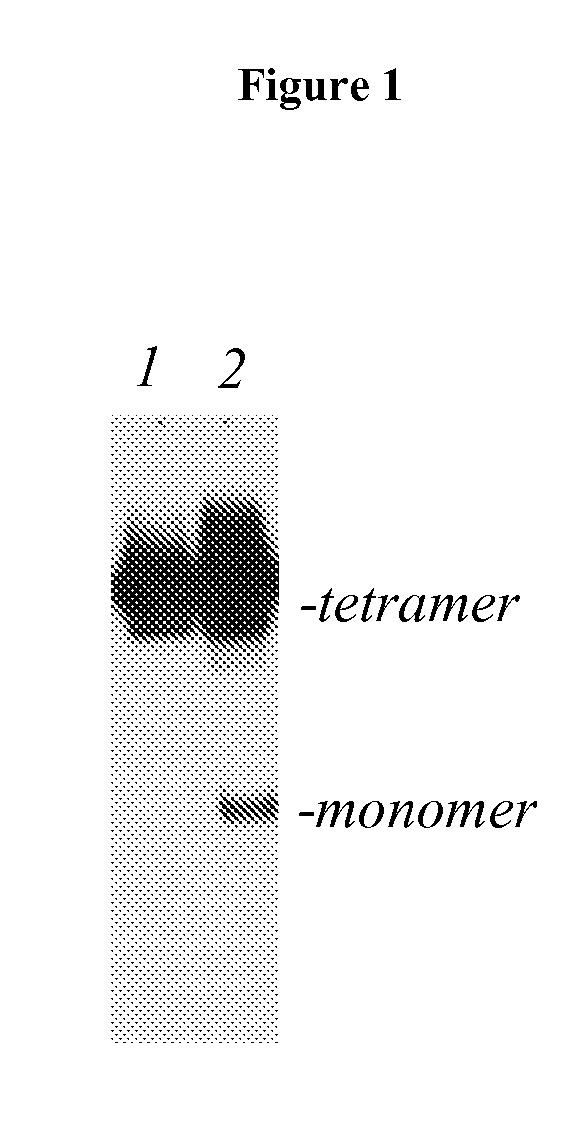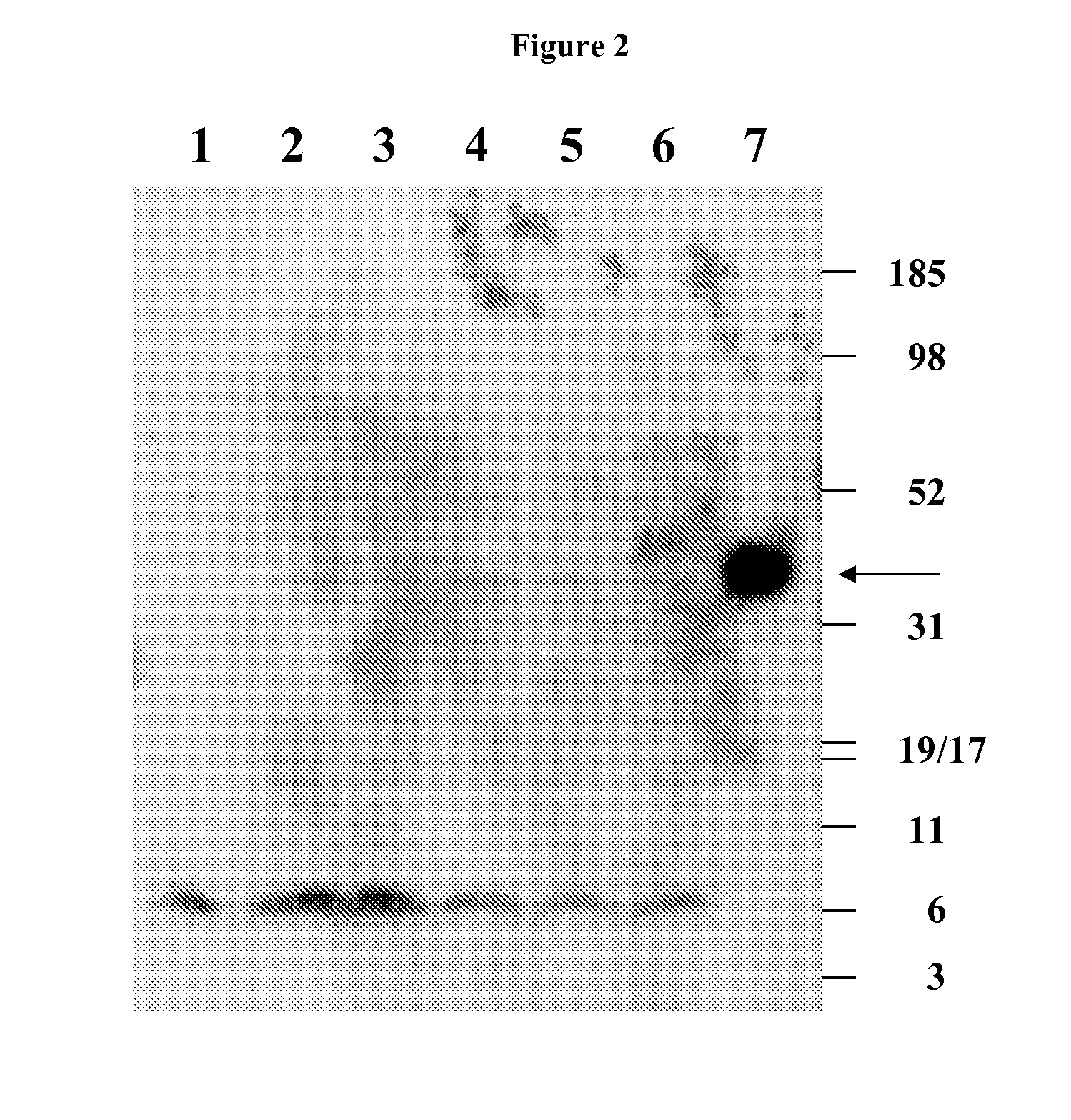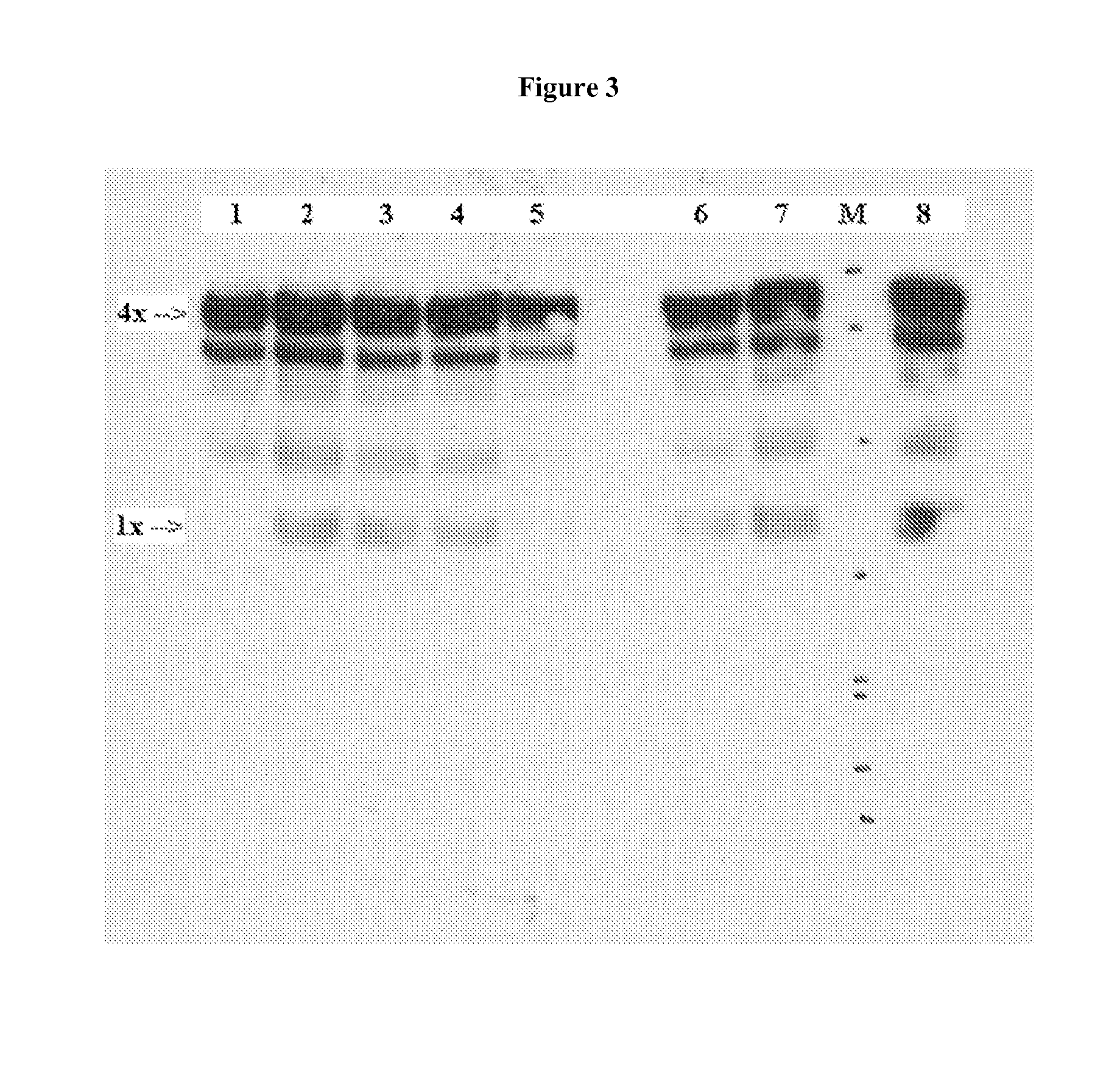Monoclonal Antibodies That Specifically Block Biological Activity Of A Tumor Antigen
a tumor antigen and monoclonal antibody technology, applied in the field of purified novel monoclonal antibodies, can solve the problems of affecting the antibody used to kill cancer cells also has a deleterious effect on normal cells, and the survival rate of cancer cells is still less than 40%
- Summary
- Abstract
- Description
- Claims
- Application Information
AI Technical Summary
Benefits of technology
Problems solved by technology
Method used
Image
Examples
example 1
Generation of Anti-FR-α Antibody-Producing Cells
[0129]Murine antibody LK26 was raised against choriocarcinoma cell line Lu-75(c). LK26 was humanized by CDR grafting, yielding an IgG (IgG1 / κ subtype) expressed in NS0 cell lines, according to the method of U.S. Pat. No. 6,124,106. The NS0 cell line was transfected with a hPMS2-134 expression plasmid. The MMR gene was cloned into the pEF expression vector, which contains the elongation factor promoter upstream of the cloning site followed by a mammalian polyadenylation signal. This vector also contains the NEOr gene that allows for selection of cells retaining this plasmid. Briefly, cells were transfected with 1 μg of each vector using polyliposomes following the manufacturer's protocol (Life Technologies). Cells were then selected in 0.5 mg / ml of G418 for 10 days and G418 resistant cells were pooled together to analyze for gene expression. The pEF construct contains an intron that separates the exon 1 of the EF gene from exon 2, which...
example 2
Screening Strategy to Identify Antibody-Producing Clones and Characterization of Anti-FR-α Antibody
[0132]An application of the methods presented within this document is the use of MMR-deficient immunoglobulin-producing cells to create a cell that is substantially free of FR-α binding competitors or a cell that produces substantially only the target immunoglobulin, for example, a FR-α antibody of the invention, including but not limited to an antibody comprising a light chain comprising an amino acid sequence of SEQ ID NO:2 or 3 and a heavy chain comprising an amino acid sequence of SEQ ID NO:5 or 6. FIG. 4 outlines the screening procedure to identify clones that produce high affinity MAbs. The assay employs the use of a plate Enzyme Linked Immunosorbant Assay (ELISA) to screen for clones that produce high-affinity MAbs. 96-well plates containing single immunoglobulin-producing cells are grown in growth medium plus 0.5 mg / ml G418 to ensure clones retain the expression vector. Plates ...
example 3
Binding of Antibody to Multimeric FR-α
[0138]Binding of a monoclonal antibody to the tetrameric form of FR-α was shown by Western blot. Briefly, SK-Ov-3 and IGROV tumor cells were grown in nude mice and excised. Tumor tissues were lysed in RIPA buffer with 15-20 strokes in a 2 ml Dounce tissue homogenizer. Insoluble material was removed by centrifugation and the total protein of the supernate was determined using a BioRad protein Assay. In different experiments, either 5 ug or 20 ug of protein was run on a 4-12% Bis-Tris gel (MES) under non-reducing conditions. The electrophoresed protein was transferred to a PVDF membrane. The membrane was blocked in Blotto (5% milk, 0.05% TBS-T). A 1:100 dilution of culture supernate from LK26 hybridoma cells and total concentration of 0.1% NaN3 was added directly to the Blotto blocking solution as the primary antibody, and the membrane was incubated overnight. The membrane was washed in 0.05% TBS-T and the secondary antibody (horseradish peroxidas...
PUM
 Login to View More
Login to View More Abstract
Description
Claims
Application Information
 Login to View More
Login to View More - R&D
- Intellectual Property
- Life Sciences
- Materials
- Tech Scout
- Unparalleled Data Quality
- Higher Quality Content
- 60% Fewer Hallucinations
Browse by: Latest US Patents, China's latest patents, Technical Efficacy Thesaurus, Application Domain, Technology Topic, Popular Technical Reports.
© 2025 PatSnap. All rights reserved.Legal|Privacy policy|Modern Slavery Act Transparency Statement|Sitemap|About US| Contact US: help@patsnap.com



